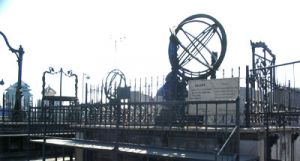Exhibition Hall of Ancient Astronomical Instruments
On South Jianguomen Street in the East City District stands the Exhibition Hall of Ancient Astronomical Instruments, the descendent of an observatory first built in 1279 in the Yuan Dynasty. This was the work place of Guo Shoujing, the noted astronomer, hydraulic engineer and mathematician.
The observatory' s name was changed several times. In the Yuan period, it was called the Terrace for Managing Heaven (Sitiantai), and in the Ming, the Terrace for Observing the Stars (Guanxingtai). In modern times, it was opened to the public as a museum in 1956.
The bronze astronomical devices on display are not only scientifically accurate; they also exemplify the finest tradition of Chinese craftsmanship. Note particularly the exquisite decorations provided by the “heavenly” dragons.
Seven of the 15 instruments were moved to Nanjing in 1931 and are now on display at the Zijinshan (Purple Gold Mountain) Observatory. The eight instruments remaining in Beijing are as follows: three armillary spheres, a quadrant, a celestial globe, a horizon circle, a quadrant altazimuth and a sextant.
Further Information:
Open: 9:00 -- 16:30
Admission: 10 yuan
Tel: 8610-65128923
